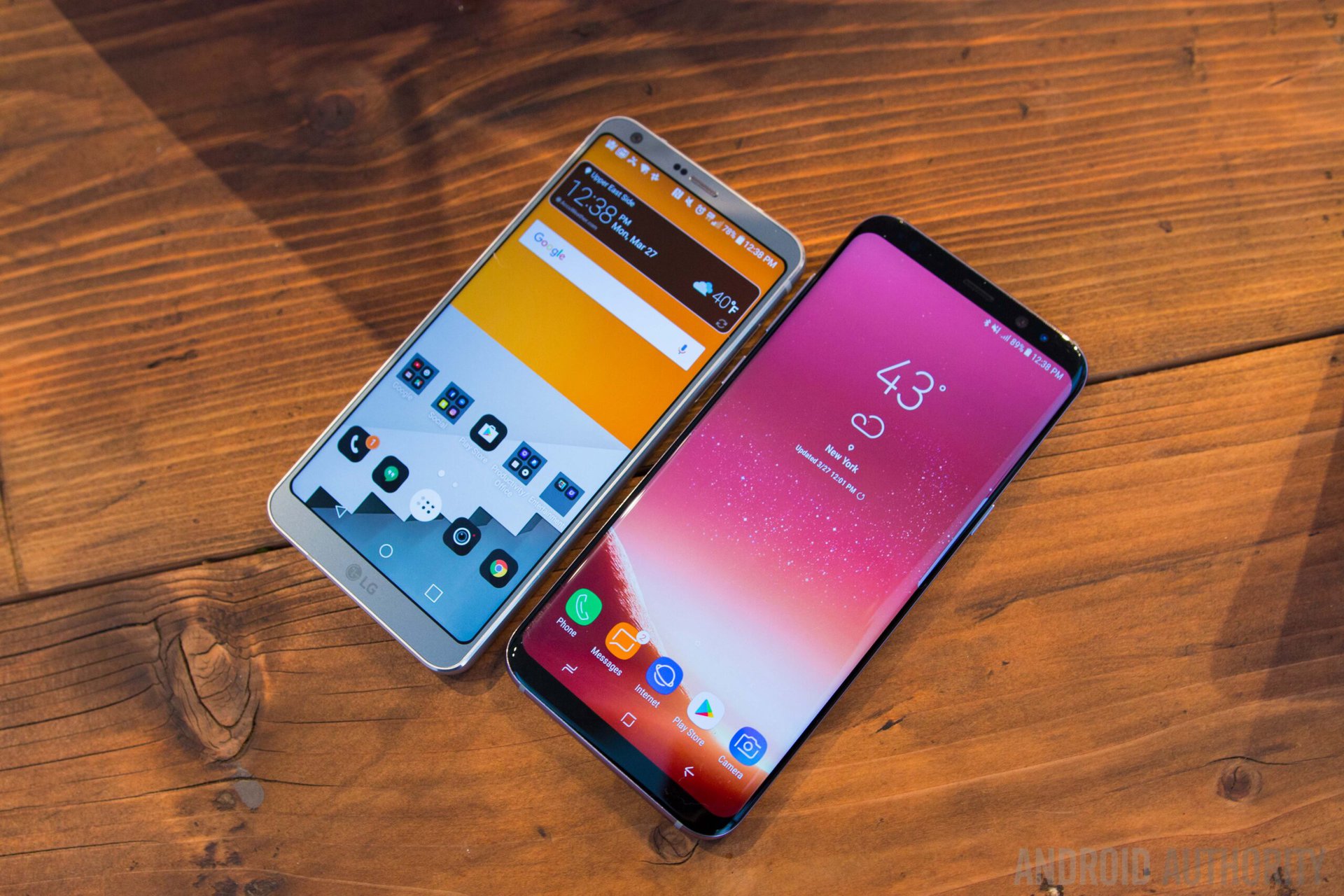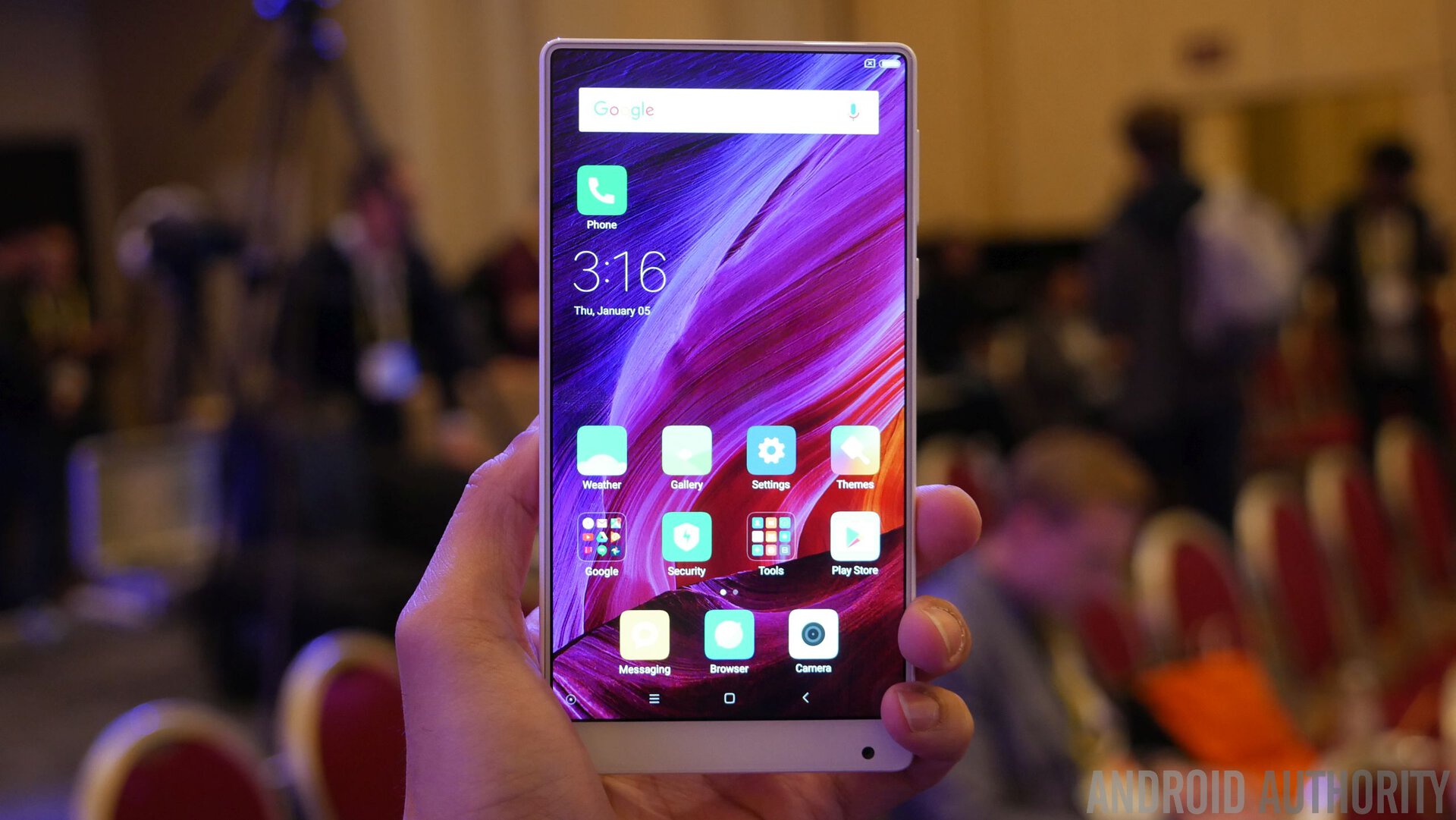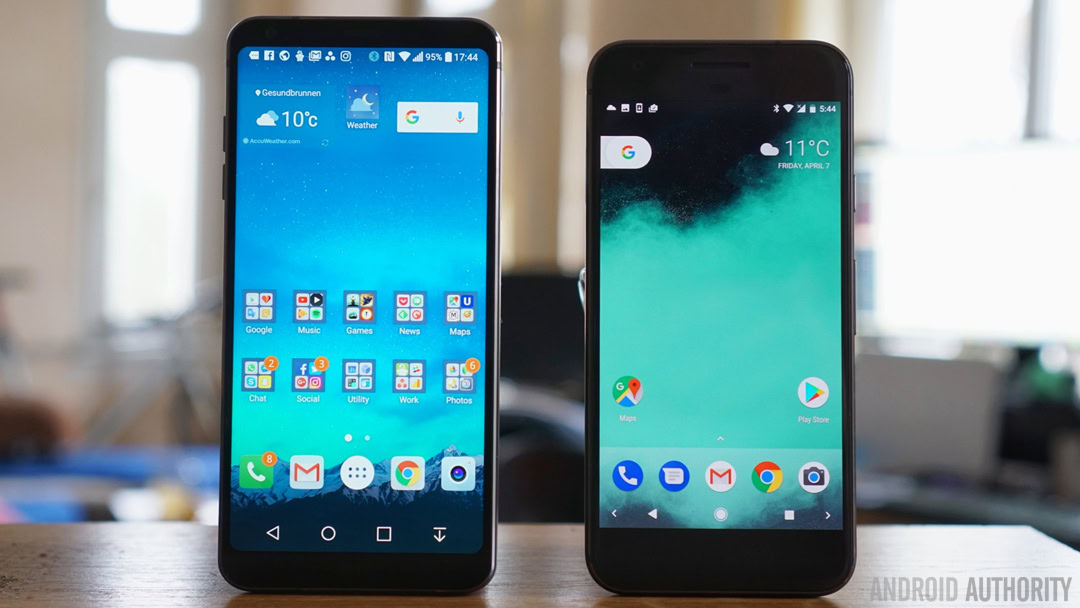Affiliate links on Android Authority may earn us a commission. Learn more.
We need to rethink what a “big” smartphone is

I’ve seen a lot of people complaining lately that the Galaxy S8 is too big. And if not the base model S8 then absolutely the Galaxy S8 Plus with its ludicrously large 6.2-inch screen. Compared to other devices we know in that space – like the Xiaomi Mi Mix and Nexus 6 – the Galaxy S8 Plus surely has to be a monster, right? Not really: it’s actually the same height as both those phones but significantly less wide.
I heard the same “too big” rumblings about the LG G6, although admittedly to a lesser degree. It’ll be too tall, they said, and yet, put it side by side with the regular sized Google Pixel, with its measly 5-inch screen, and the difference is not that noticeable, despite the G6 having a 0.7-inch larger display. The G6 is actually smaller than the Pixel XL and that device still only has a 5.5-inch screen.

Think about those display discrepancies in “old phone” terms. Take the Nexus 5 and Galaxy Note 3 for example. That’s a (close enough to) 5-inch screen and a 5.7-inch screen. But there’s over a 13mm difference in height and 10 mm difference in width between the two. Compare the LG G6 to the Pixel and that difference is down to 5mm in height and two and a half in width.
The Galaxy S8, the smaller of this year's Samsung flagships, actually has a smaller footprint than the S7 Edge.
Of course, the Pixel might be a particularly bad example of “new smartphone” dimensions with its giant chin and forehead, but the LG G6 isn’t even the most extreme example of new phone dimensions. The Galaxy S8, the smaller of this year’s Samsung flagships, actually has a smaller footprint than the larger of last year’s Galaxy flagships, despite packing a 5.8-inch screen compared to the S7 Edge’s 5.5-inch display.

Bigger than bigger
So I think it’s about time we recalibrate what we think of as a “big” smartphone. The term phablet has – thankfully – become irrelevant because a “small” phone these days is like the Pixel: 5 inches. The difference brought about by the LG G6 and Galaxy S8 is that now when we say a phone is “big” what we really mean is that the screen is big, because the phones themselves have remained much the same size.
Now when we say a phone is “big” what we really mean is that the screen is big, because the phones themselves have remained much the same size.
The Galaxy S8 Plus is a full centimeter taller than the regular S8 and a half centimeter wider, but compared to any other phone you’ve ever known, it’s unbelievably compact for a 6.2-inch device. In fact, the S8 Plus is the same size as the Nexus 6P and a half centimeter less wide than the Galaxy Note 3, both of which have a half-inch smaller display than the S8 Plus.
Maybe most folks will find the Galaxy S8 Plus too top-heavy for comfortable handling. Maybe the LG G6 is too tall and skinny for a lot of folks too. But we have to be impressed that what we get in exchange for a slightly taller frame is a much larger screen in a phone that’s about the same width as the one in your pocket.
Samsung knows consumers, and consumers want big screens on normal-sized phones (let’s hope Google gets that memo in time for the Pixel 2). I won’t pretend phones as big as the S8 Plus will be for everyone, in fact I might even opt for the regular-sized one myself, but whichever phone you buy this year, we need to rethink our definition of “big” when we talk about them.